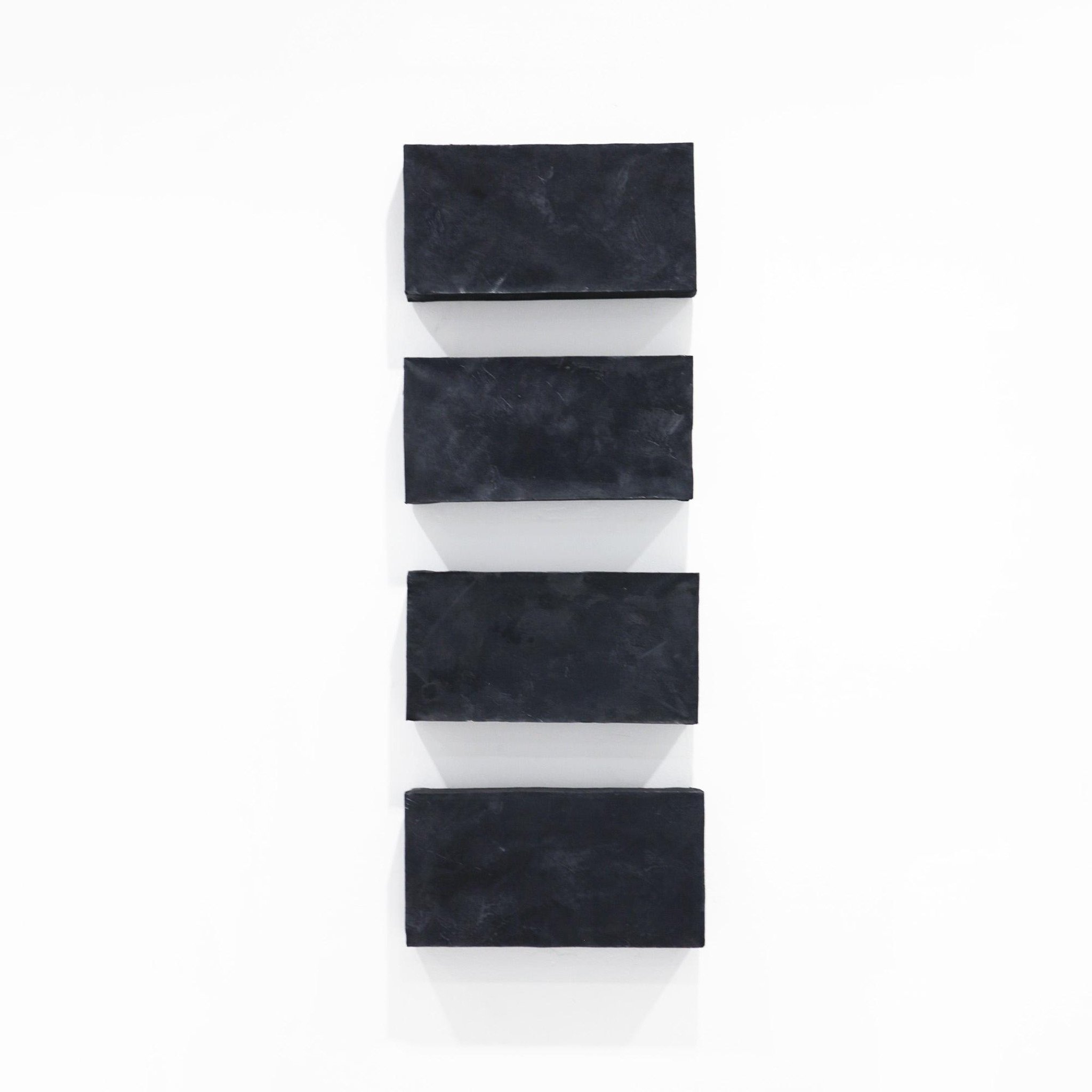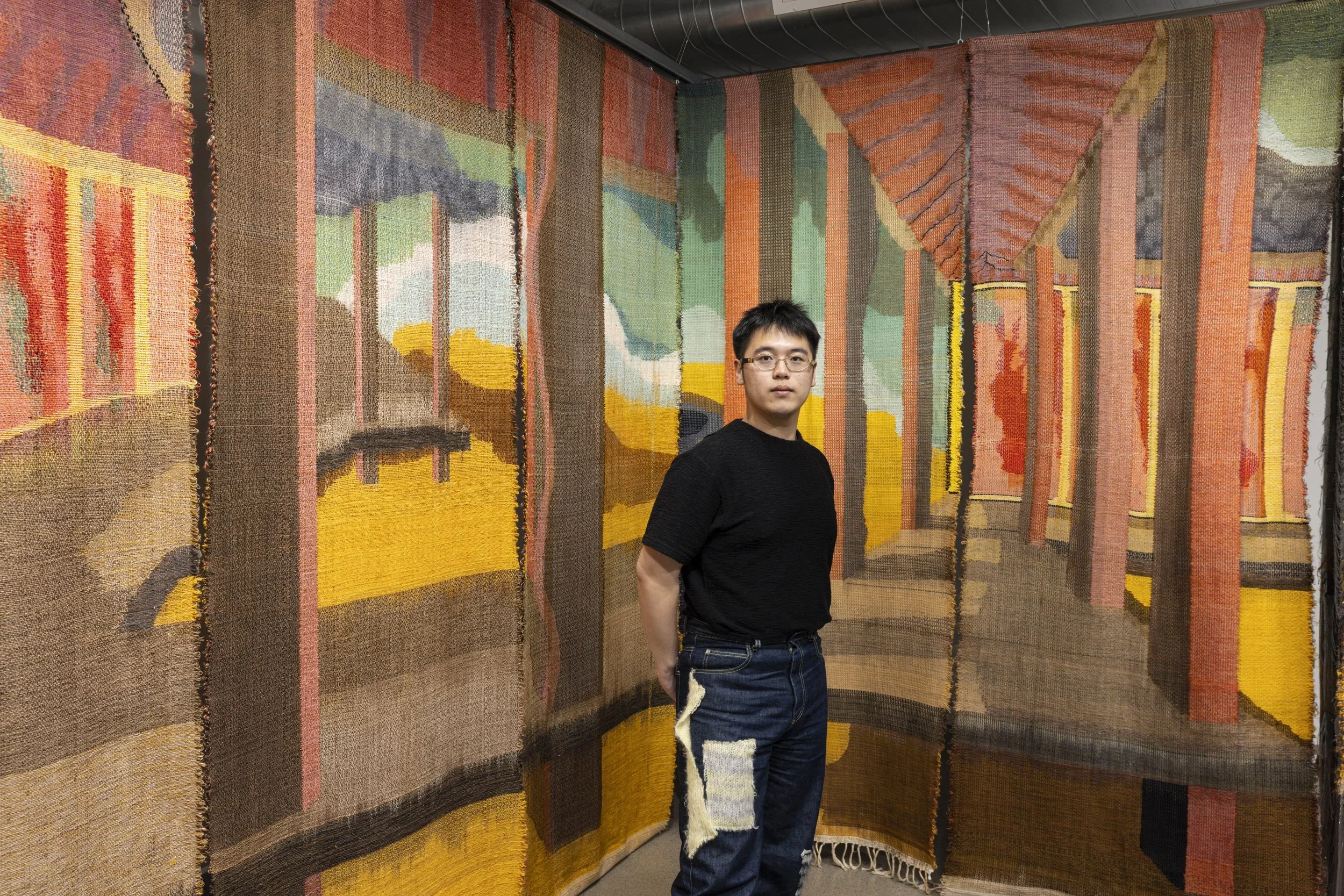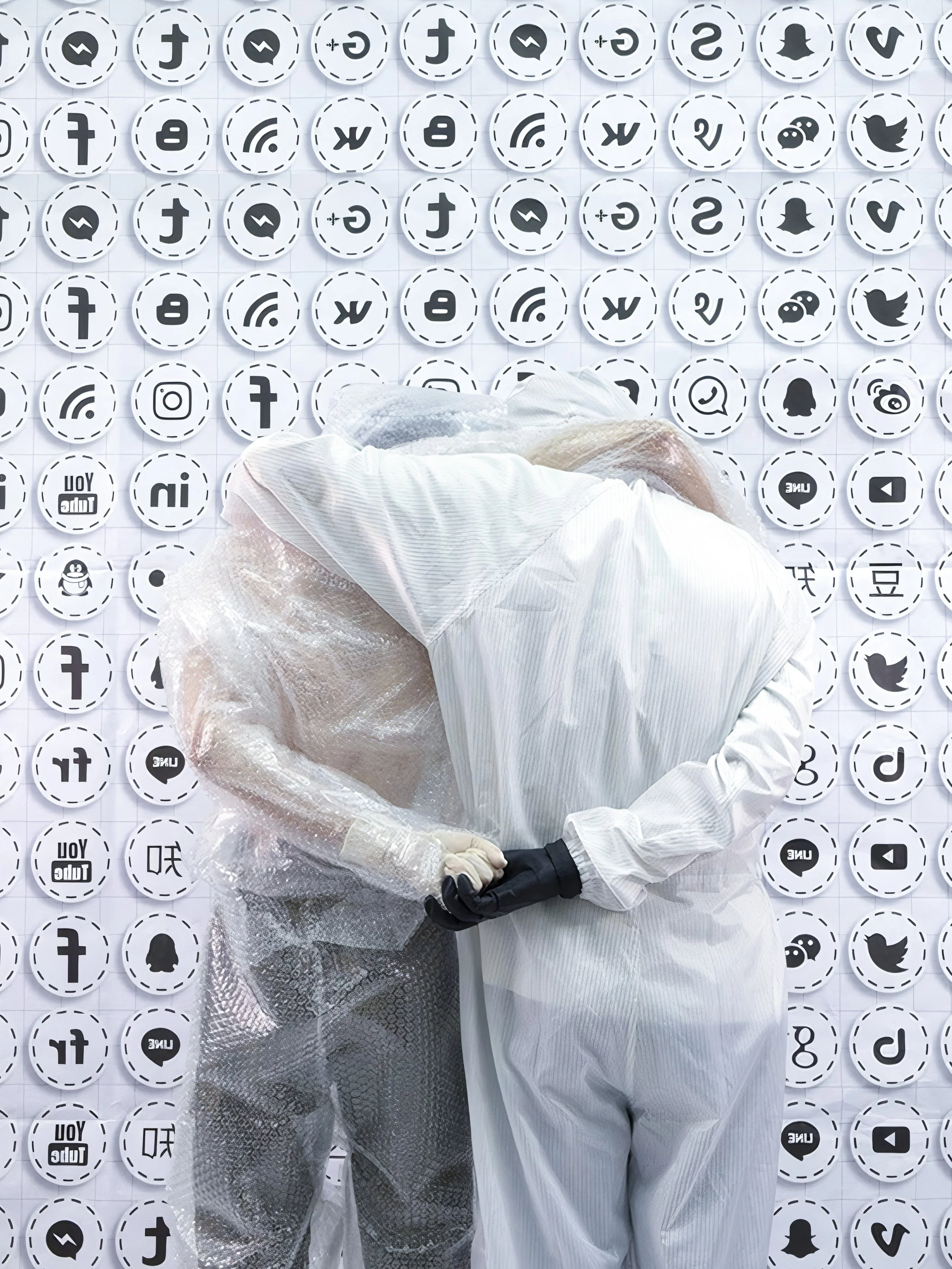10 Questions with Seoyoung Kim
Seoyoung Kim (b. 1999, Seoul) is an interdisciplinary artist and curator based in Brooklyn. She is also the founding director of Site, a variable experience and curation service dedicated to connecting the arts and creative experiences to build communities. Seoyoung’s practice is a continuing examination of surroundings and site relativity that comes from the placement of things. Her work, when placed in a chosen site, documents a triangular relationship between site, thing, and viewer. The anonymity and defying of identification of her practice integrate the division in a hierarchy in the experience of art. Seoyoung’s works have been exhibited in Site (Brooklyn), AHL Foundation (New York), Dodge-House Gallery (Providence), Project Space WIP (Seoul), and WWW Space (Seoul).
Seoyoung Kim - Portrait
ARTIST STATEMENT
The placement and experience of art in different sites have a significant impact on how artworks are viewed/experienced. The relationship between space, art, and viewership is a constant power struggle. Space is versatile and can be filled with elements to create a cohesive experience. Things, that reject traditional categorizations, such as paintings, images, sculptures, or objects, exist without clear boundaries and have no fixed beginning or end. They manipulate and transform space, engaging in conversation with site and viewer. The making and display of things question traditional ways of viewing and engaging with art forms in specific sites. Artistic expression has the power to shape and liberate structural spaces. The language of things, represented by their anonymity and monochromatic darkness, conceals their true nature and invites a sense of mystery. The building of things undermines the idea of painting through the use of configured linguistics and surfaces that hide their materiality. Things occupy space with flexibility and authority, creating tension and welcoming viewer engagement. Reacting to the room and engaging with things on display is a relative engagement for each viewer. There is no prescription for experiencing things, as the dynamics and contrast they create depend on viewer perception and the context of time and space. The interplay between things, site, and viewer expands through the phases of viewing, fostering an interdependent relationship.
2023-07, Oil and Graphite on Stretched Muslin and Metal, Dimensions Variable, 2023 © Seoyoung Kim
INTERVIEW
First, can you share a bit about your background?
I was born and raised in Seoul, South Korea. Growing up in a fast-paced metropolitan city, I was always involved in creating new relationships and becoming part of communities with so much to explore; I made new and old connections with ever-changing neighborhoods, people, and cultures. Those experiences led me to build an interest in visual arts, as I believe that it is a powerful tool to bridge those elements in contemporary living together. I moved to the US in 2018 to attend the Rhode Island School of Design to study moving images and film, but I ended up pursuing painting and art history. I now live and work in Brooklyn, New York, as a curator and arts professional as I continue my studio practice.
You are both an artist and a curator. How did you transition from being an artist to also founding Site? What inspired you to create this platform?
It all started during the Pandemic. I rented out a basement of an old residential building for a studio during my gap year for basically nothing. It was a huge space - so I taped the floors and rented it out to other artists who were looking for temporary studio relief for nothing as well. Halfway through the lease of the basement studio, I had already formed a community through studio visits and the visiting artists coming and going from my studio mates. I decided to put on my work clothes, paint the moldy walls, and install some track lighting. I installed curtains to divide the space, and that was my very first art space.
Projectspace WIP was a self-directed curatorial project drawing from my experiences visiting galleries, alternative spaces, and art parties in Seoul during the Pandemic. Resonating with artists in my community, I gathered a few peers who shared the same concerns and fears yet hopeful ambitions about collective and individual practices to throw a group show. Unseen Imgs was a three-person show in 2021. Doing everything from scratch without having any professional experience, and purely from an artists' perspective at the time, was definitely something that I could do with the fearless early-twenties state of mind. People, especially locals of the area (super residential), showed up; I was genuinely surprised when I only expected friends and families to show up. Some artists who came to see the show also proposed a show, and I got to curate another two-person show before the lease ended. Experiencing the process and short-term growth of WIP hooked me on to what opportunities like the exhibitions I curated can do for communities and their own development as artists.
I returned to school, developed my own practice, and got my degree, and soon, I was among the thousands in the "Moved to Brooklyn after Art School" crowd. Going to Chelsea and the Lower East Side gallery openings became my weekly activity. As much as I was fascinated with the art world's tight community revolving around art, I quickly understood the struggle that young artists at the beginning of their careers might face to get into that world. I thought, "It's going to take at least 20-30 years before we get here" for the majority of us. Coming out of a tight-knit community of a small art school, I immediately felt lacking in opportunities to talk about our own works and celebrate our practices. The site started with the idea that there should be more opportunities for creatives to share their visions and narratives and connect to build community.
2022-22, Oil on Graphite on Stretched Muslin, Dimensions Variable (approximately 12 x 48 in each), 2023 © Seoyoung Kim
2022-23, Oil and Graphite on Stretched Muslin, Dimensions Variable, 2023 © Seoyoung Kim
As an interdisciplinary artist and curator, what challenges do you face in balancing both roles and how do they complement each other in your creative process?
Finding time to make work on my own practice is definitely the biggest challenge. I work in arts organizations that occupy most of my day time. I try my best to balance my evenings to find the time to get centered and work in the studio or develop new programs for Site. I find it the most centering and exciting to also take the time to visit artist studios and converse with them. Having both perspectives as an artist and curator, seeing the processes of artists and communicating our struggles and practices has become my drive to keep going. I really believe that one practice cannot live without the other at this moment.
My interest in surroundings adds an additional layer or even completeness; they can bring to things starting from the environment that I put myself in. The connections that you build with other artists and colleagues are a big privilege you get to have in my practice, living and working in New York. That exploration led to forming installation plans for exhibitions and imagining audience engagement. Crit Club is one of the programs that Site hosts. My dear friend and colleague Emelia organizes a gathering of artists, writers, and performers every three Sunday evenings. We have pizza and beer as we talk about our dilemmas, concerns, excitement, and progress of our practice in our studios as artists trying to make it in the big city. As a participant of Crit Club, I found a sense of comfort along with a strong motivation to continue my own practice along with the development of more opportunities to foster dialogues and for artists to connect.
Can you explain the concept of "things" in your practice and how they engage with space?
"Things" exist outside the traditional realms of painting, sculpture, image, or object. They live outside a category - they are their own thing: anonymous and mysterious beings. Through this nature, "things" don't reveal what they are built out of. A lot of people ask me if they are made out of metal or stone and are surprised to find out that they are made on stretched surfaces or wood. The ambiguity invites a closer look, a second look, and makes you want to feel them or hold them. That attraction of the audience forms a surrounding around things. The modular nature of things is site-relative. A single unit of a "thing" often re-appears at a different site. They expand and contract; they take over and hide; they embed and push away. I am drawn to the multiple potentials that "things" hold when placed and viewed. They are not finished until one approaches them closely at "things" 's temporary home.
"Things" exist outside the traditional realms of painting, sculpture, image, or object. They live outside a category - they are their own thing; anonymous and mysterious beings. With this nature, "things" do not reveal what they are built out of. The presence of "things" manipulate and transform space, engaging in conversation with each other, with the room, and with the viewer. "Things" occupy space with flexibility and authority, creating tension and welcoming viewer engagement. Reacting to the room and engaging with "things" on display is a relative engagement for each viewer as well. There is no how-to prescription on how to experience "things", as the dynamics and contrast they create depend on viewer perception and the context of time and space.
They manipulate and transform space, engaging in conversation with site and viewer. The making and display of things question traditional ways of viewing and engaging with art forms in specific sites. Artistic expression has the power to shape and liberate structural spaces.
Things occupy space with flexibility and authority, creating tension and welcoming viewer engagement. Reacting to the room and engaging with things on display is a relative engagement for each viewer. There is no prescription for experiencing things, as the dynamics and contrast they create depend on viewer perception and the context of time and space.
2022-21, Oil on Stretched Muslin, 36 x 48 in each, 2022 © Seoyoung Kim
The relationship between space, art, and viewership is a central theme in your work. How did you get interested in this relationship? And how does it influence your work?
A painting living on a wall under a spotlight has its own narrative within the frame, but once it comes off the wall, that is an additional narrative. For example, when a piece is tied to a pole, viewers can also see the back of the painting. That reveals the artists' intention to unveil their process or build a narrative in relation to the painting's story. When an object is placed in a tiny corner or up so high that it is hard to locate in an exhibition setting, what was the artists' mission, and what are they trying to say? Is the unapproachability part of their narrative?
Where artworks live present a whole new layer beyond what lives within the edges or frame. I also sometimes consider the space that holds pieces. Their history, architecture, and even energy visitors bring in. One of my favorite alternative spaces back home in Seoul, This Is Not a Church, still has church benches, floors, and even the old church sign-up. Rather than undergoing a massive renovation, TINC incorporated the church's history and aura to its new space and filled it up with installations and performances. That always adds to another framing to the exhibitions they host. Viewing a presentation in a space like TINC, a white cube gallery, an apartment, an abandoned basketball court, or a coffee shop always brings a different layer and resonance to the audience experience. Complementing my curatorial interest and practice, my interest in the relationship of where artworks live came naturally.
Your practice focuses on examining surroundings and site relativity. Could you elaborate on how you approach this exploration in your artworks?
At the moment, my exploration focuses mostly on interior spaces. The interior architecture of buildings in the cities that I live in and the surroundings of interiors like furniture, ceiling tiles, flooring, heating pipes, wire fences, layers of concrete walls, and poles with paints peeling off started my practice. I detach from their functionality and question the time they spent in that space and how they have transformed over the course of their use. It is like creating one's own environment, but how different individual audiences could react differently to the arrangement.
The relationship comes from my goal to incorporate my experiences and exploration of spaces to display in environments rather than fixating upon a single narrative. This celebrates engagement beyond having an idea as the central theme, reorienting the perceptions, and reimagining our relationship with surroundings during experiences.
Your artworks challenge traditional ways of viewing and engaging with art forms in specific sites. What kind of reactions or responses do you hope to evoke from viewers through this approach?
I really do hope that my works are not considered "precious" in a presentation setting. I purposefully do not have a prescribed instruction in exhibition settings. But I want the audience to step inside, go around, go under, hop over, and simply play around things. The tension formed on "not knowing what to do around them" is also a reaction that I expect. This may not be the friendliest way, especially imagining a larger crowd engaging around the forms. I am interested in the dynamic it creates during the interaction: tension and embedding.
2023-03, Oil and Graphite on Wood and Metal, Dimensions Variable, 2023 © Seoyoung Kim
2023-06, Oil and Graphite on Wood, Rock, Dimensions Variable, 2023 © Seoyoung Kim
Beyond your current practice, are there any new directions or mediums you're interested in exploring in the future?
I really hope to expand my practice into exterior spaces for installations. As we are close to summer, I hope to plan a presentation that can live outdoors, starting on the dingy rooftop of my friend's apartment, an abandoned industrial field where my neighborhood cats roam, a parking lot, or a greener field. I am going to continue to explore my interest in the contrast and dynamics of prescribed how-to-guides and unfriendly presentations in an exhibition setting.
Are there any specific projects or exhibitions you're working on or planning?
I am currently in the process of curating the Site's second group exhibition, Site 002. △ with artists Soeun Bae and Soo Park, along with my works. This is a particularly exciting moment for us as this is the first revisiting of our artistic connection that leads back to 2021 at Projectspace WIP during the pandemic. This experience is directed in the hopes of creating balance and recentering ourselves to our own practices, like the triangular form, as we reconnect all the way across the world this time. The three-person exhibition opens May 17th in Bushwick, Brooklyn.
Lastly, where do you see yourself and your work five years from now?
In five years from now, I would be partnering and collaborating with a larger range of communities and creatives. Hopefully with Site, I would have already built some wonderful new collectives and connections. I also believe that I have a lot of room to grow, go beyond my comfort zone, and find new narratives in both my curatorial and artistic practice. I really do hope that I will still be able to find the time and passion to continue with both.
Artist’s Talk
Al-Tiba9 Interviews is a promotional platform for artists to articulate their vision and engage them with our diverse readership through a published art dialogue. The artists are interviewed by Mohamed Benhadj, the founder & curator of Al-Tiba9, to highlight their artistic careers and introduce them to the international contemporary art scene across our vast network of museums, galleries, art professionals, art dealers, collectors, and art lovers across the globe.





















